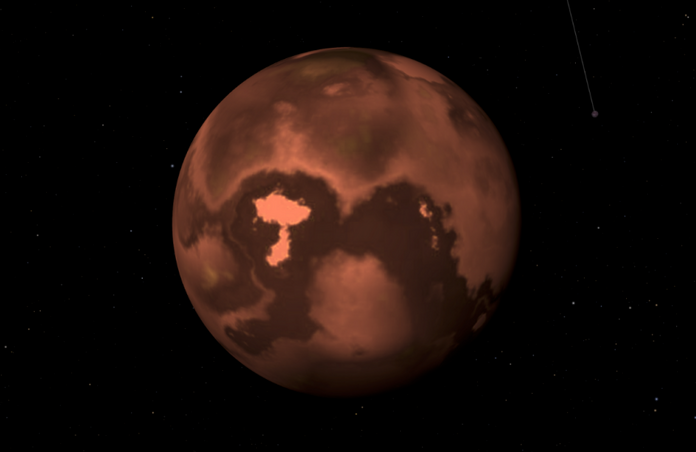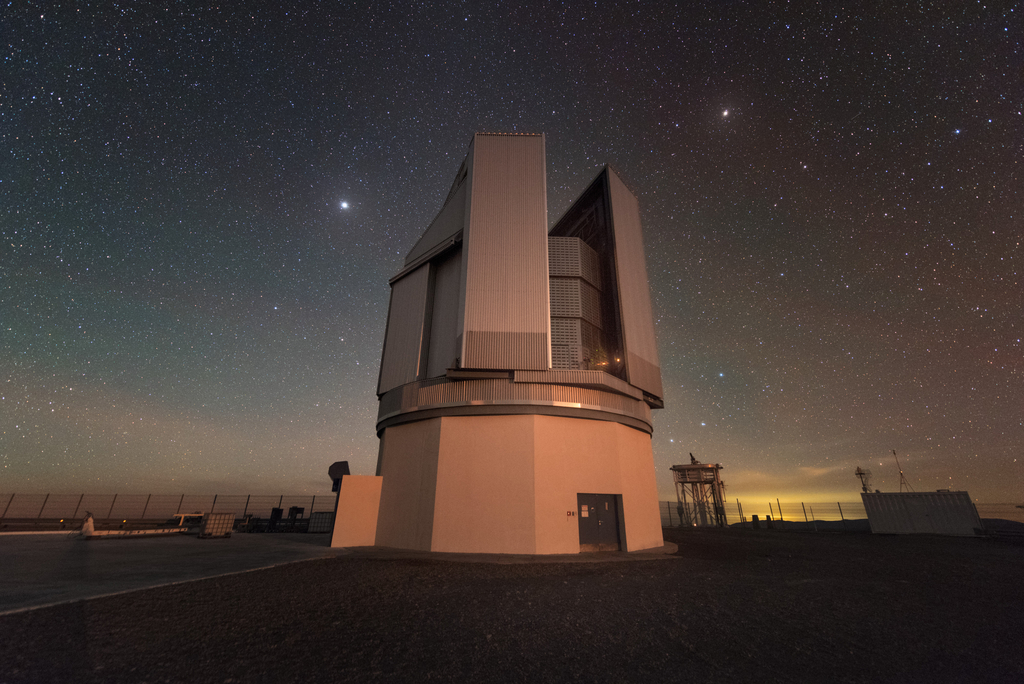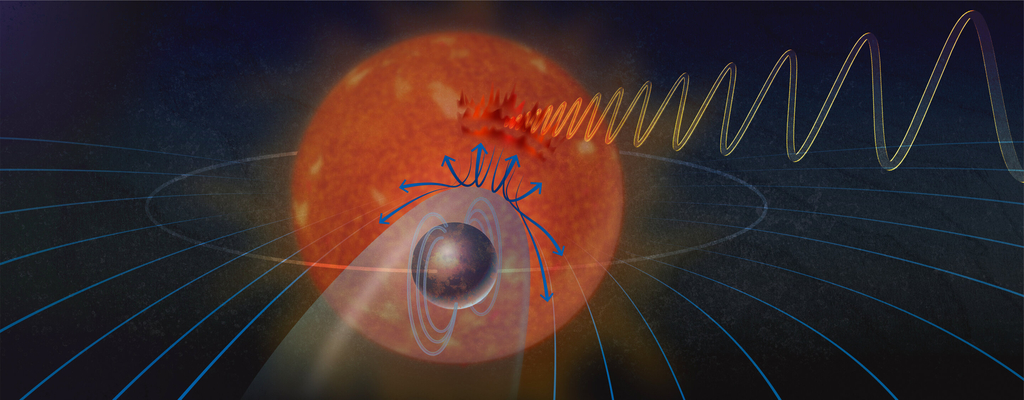Powerful radio bursts detected from distant exoplanet hint at Earth-like magnetic field

Strong radio signals have been detected from a rocky Earth-sized exoplanet, making it an ideal candidate for hosting a magnetic field. Identified by two researchers Sebastian Pineda and Jackie Villadsen, the YZ Ceti system consists of a slowly rotating red dwarf, which hosts 3 terrestrial planets. The closest of which, YZ Ceti b, completes its orbit within 2 days, therefore such interactions between the exoplanet and its host star are thought to be the source of powerful radio waves which reach Earth.
A planets magnetic field can be an extremely useful factor in supporting life, for example, Earth’s magnetic field deflects high energy particles and plasma that is regularly ejected from the sun, therefore helping to maintain an atmosphere which sustains life. “A planet's magnetic field can prevent that planet's atmosphere from being worn away over time by particles spewed from its star”, explains Pineda, an astrophysicist at the University of Colorado. "Whether a planet survives with an atmosphere or not can depend on whether the planet has a strong magnetic field or not."

The duo used the Karl G. Jansky Very Large Array to observe the repeating radio bursts, being emitted from YZ Ceti at frequencies between 2-4GHz. "We saw the initial burst and it looked beautiful," says Pineda. "When we saw it again, it was very indicative that, OK, maybe we really have something here."
It is theorised that the radio waves being detected from the star are a result of the interactions between the orbiting exoplanets’ magnetic field and the host star. However, for such waves to still be detected over such long distances, they have to be very strong.
Although magnetic fields have been detected on exoplanets before, all detections of this kind were on high mass Jupiter-like exoplanets. Identifying these fields on much smaller Earth-like planets requires a different technique. Additionally, magnetic fields are invisible, so it is difficult to determine if a far-away planet possesses one.
"What we're doing is looking for a way to see them," Villadsen says. "We're looking for planets that are really close to their stars and are a similar size to Earth. These planets are way too close to their stars to be somewhere you could live, but because they are so close the planet is kind of plowing through a bunch of stuff coming off the star. If the planet has a magnetic field and it plows through enough star stuff, it will cause the star to emit bright radio waves."

It is thought that as the rocky exoplanet rapidly orbits its star, plasma from YZ Ceti collides with the planets’ magnetic field, subsequently bouncing off and interacting with the stars magnetic field which results in the generation of strong radio waves. The strength of such waves can be measured, allowing astrophysicists to calculate the strength of the planets magnetic field.
"This is telling us new information about the environment around stars," says Pineda. "This idea is what we're calling extrasolar space weather.” Solar weather around Earth is created due to plasma bursts and high energy particles from the sun. These eruptions can disrupt telecommunications and short circuit electronics in satellites. In addition, the aurora borealis or northern lights are a result of the interactions between solar weather and Earth’s magnetic field. Similarly, the interactions between the YZ Ceti system also produces an aurora, however, the aurora is on the star instead.
Nevertheless, although YZ Ceti b is currently the best candidate for a planet of its type that hosts a magnetic field, further investigation is still needed to confirm the radio bursts. "This could really plausibly be it," says Villadsen. "But I think it's going to be a lot of follow-up work before a really strong confirmation of radio waves caused by a planet comes out.”
According to their paper which has been published in the journal Nature Astronomy, Pineda and Villadsen plan to use the YZ Ceti system as a template to study other star-planet interactions. Using this technique, the researchers hope to find and explore other planets and detect their magnetic fields.
--
Cover image: NASA
Journal source: Sebastian Pineda, Coherent radio bursts from known M-dwarf planet-host YZ Ceti, Nature Astronomy (2023). DOI: 10.1038/s41550-023-01914-0. www.nature.com/articles/s41550-023-01914-0
